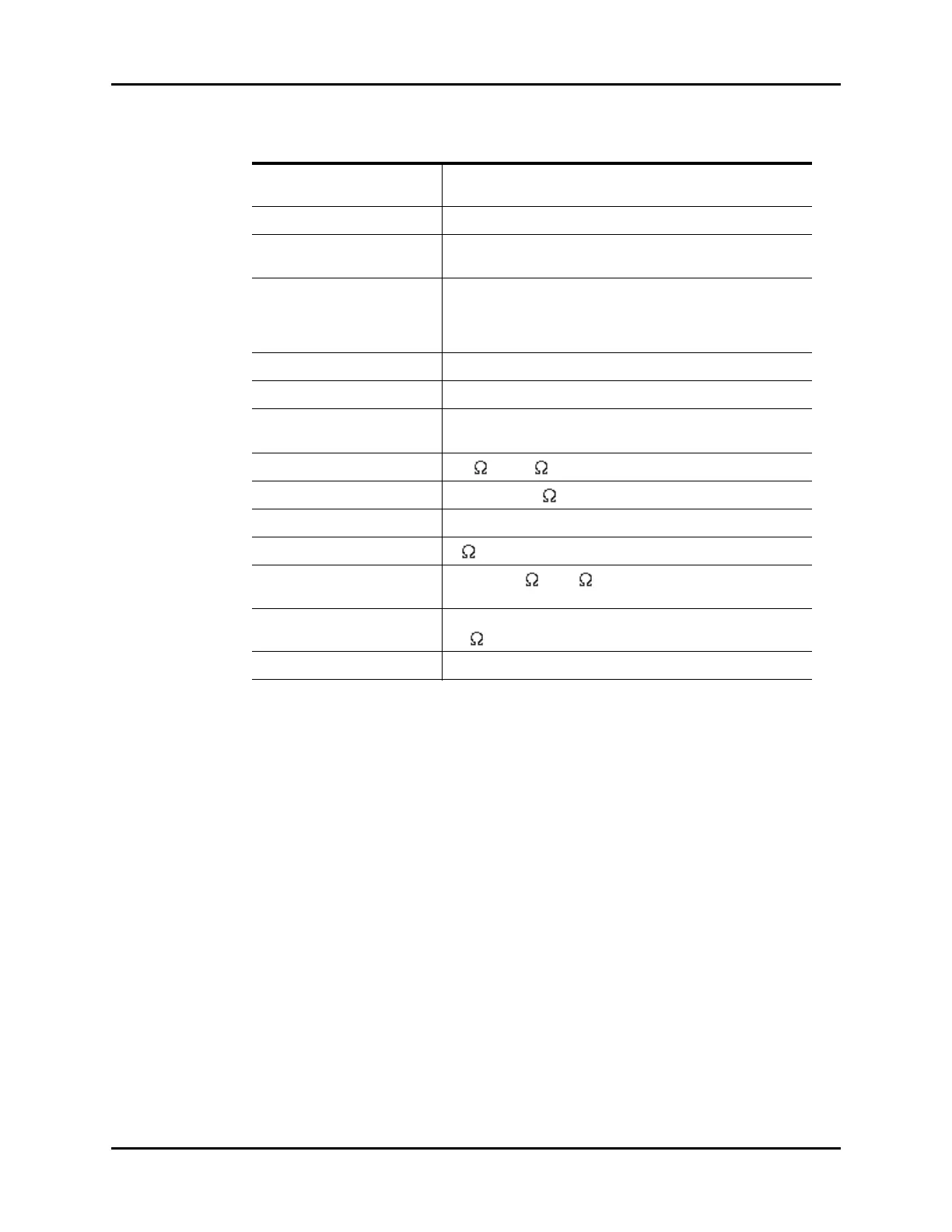Impedance Respiration Performance Product Specifications
29 - 30 V Series Operating Instructions
2. Respiration Alarms
Respiration function includes High and Low respiration rate alarms. Alarms can be triggered when
measured rate is equal to or greater than the alarm setting.
High Alarm Limits:
Low Alarm Limits:
Apnea Alarm Delay:
Source: When using a 12 Lead the respiration system acquires respiration via
the ECG leads.
Range: ECG Respiration parameter range is 4 RPM to 199 RPM.
Respiration Rate Out of Range: The respiration rate counter indicates invalid (- -) for values outside
specified range.
Accuracy: ECG Respiration parameter accuracy is greater of ± 2 RPM or 2% of the
signal value within the range of 4 to 150 RPM. ECG Respiration
parameter accuracy is ± 4% of the signal value within the range of 151
to 199 RPM.
Excitation Frequency: 38.4 kHz
Excitation Current: < 384 µA RMS max
Bandwidth: 0.1 Hz to 3 Hz (-3 dB) for adults
0.2 Hz to 3 Hz (-3 dB) for pediatric and neonatal patients
Baseline Impendence Range: 200 to 2000 at patient with 1k resistor in the ECG cable.
High Impedance Indication: Greater than 2.2 k at patient.
User Selectable Scale: Five (5) gains are provided.
Linear Signal Range: 8 p-p minimum.
Noise: Less than 0.05 at 500 patient impedance, using a Mindray ECG
cable.
Min. Breath Height Detected: It is function of respiration scale. Waveform needs to be Greater than
0.1 in order for breathes to be accurately detected.
Cardiovascular Artifact Rejection: Detected by algorithm.
Adult: 10 to 190 RPM in steps of 1 RPM, default Off
Pediatric: 10 to 190 RPM in steps of 1 RPM, default Off
Neonate: 10 to 190 RPM in steps of 1 RPM, default Off
Adult: 5 to 50 RPM in steps of 1 RPM, default Off
Pediatric: 5 to 50 RPM in steps of 1 RPM, default Off
Neonate: 5 to 50 RPM in steps of 1 RPM, default Off
TABLE 29-28 (Continued)

